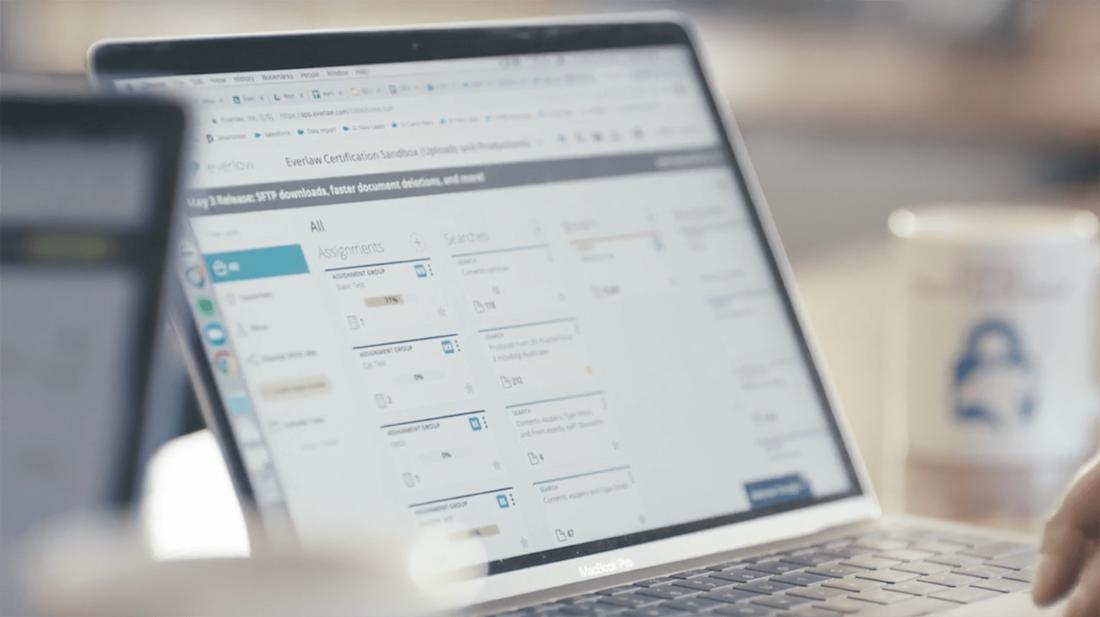5 Ways to Deliver Greater Value through Data Visualization
by Giulianno Lopez

Over the past decade, advances in legal technology have brought significant improvements to the litigation and discovery process. Machine learning and prioritization technology have gone a long way in improving the speed and quality of document review, for example. However, it doesn’t cover all the loose ends. That’s when litigation support comes in.
For today’s litigation support professionals, the opportunity to provide value extends far beyond just supporting lawyers and trial teams. Their work significantly impacts the broader organization. They are tasked with setting up processes to ensure their teams can move quickly and efficiently, with reducing the risks throughout a matter’s lifecycle, and with spotting trends in document sets and turning that information into actionable insights.
Data visualization tools, like Everlaw’s Data Visualizer, have enabled teams to do this and more.
Data visualization provides an overview of all the documents in a database, which enables teams to identify key themes and patterns in their document corpus before and during review, generating high-level insights that can inform not just the review process, but the entire case strategy.
Here are a few other ways litigation support teams can leverage data visualization to deliver greater value throughout the litigation process:
1. Project Management
Many of a litigation support team’s responsibilities revolve around project management, which entails everything from project leading, workflow design, working with clients to keep their data safe, and finding quick workarounds when roadblocks arise. It’s up to this team to not only execute an efficient review and find quick solutions when they run into issues but also to explain how and why they took a specific course of action.
On the more practical side, teams work with what the clients provide them. It can be very intimidating when there’s a large document set (at times containing millions of documents) to review, but data visualization can help give teams a real sense of control over the process by providing an eagle-eye view of the entire data set. Litigation support teams can leverage the tool to group and organize documents together in a clear and very visual format, helping them to alleviate pressure so that they’re not filtering and filtering repeatedly.
2. Quality Control
Identifying and correcting systematic errors that may happen during the initial review is a big responsibility that the litigation support team handles, especially with large document sets.
These teams can use the Data Visualizer feature for QCing data when it’s uploaded into the platform. As data often arrives compressed, it can be difficult to know exactly what is included—and if any necessary information has been corrupted, omitted, or not properly prepared.
With data visualization, litigation support teams can quickly develop a clearer view of the data, organize that data into visual tables and reports, and share that seamlessly with clients and internal teams.
3. Timeline Validation
There have been instances when a litigation support team may be handed data from 2017, but at some point, during the review, they’ll find a document from the 1900s. When this occurs, this shows the team quite quickly that some system files have taken an automatic date from a timeline or that an erroneous document was included in the upload.
Whether identifying documents that fall outside of the timeframe of the matter or handling any other QC function, the Data Visualizer tool enables users to spot a discrepancy and identify the reason it’s there.
Communication is also improved when using a collaborative platform, so teams don’t have to go through the process of exporting that information, putting it into a pivot chart, explaining what a pivot chart is, and so on.
Streamlining the process is especially critical when dealing with very tight deadlines and enormous data sets—like when you are told to expect 20 gigabytes of data and end up receiving a terabyte instead. Despite this, timelines typically don’t get extended, so litigation support teams have to quickly spot these discrepancies and explain why they’re there to the legal team and clients.
4. Email Reviews
Using data visualization is crucial when a litigation support team needs to find an email that keeps coming up during review. For example, suppose a large number of emails were forwarded to one person’s mailbox. In that case, this makes it clear that the team would need more data from the individual receiving the emails, data which could significantly impact the case.
On one occasion, an Everlaw user spotted some irregularities with a few email addresses, forwarded emails, and other specific emails. They kept coming up during review, forcing the user and their team to investigate what was going on. After getting to the bottom of the issue, they discovered that they would have to review hundreds of thousands of additional unaccounted-for documents.
The Data Visualizer helped them spot this and explain why this was happening. That’s invaluable when you need to review more than a million documents.
5. Data Insights
What litigation support does is technical by nature. Those without a technical background may not immediately understand the nature and value of the support provided. As technologists, litigation support professionals have to validate their work, communicate their findings in a digestible manner, and offer recommendations based on what they see in the data—all within a tight turnaround time.
The visional components of the Data Visualizer make the process so much easier because when presenting to non-technical teams, statistics in Excel sheets rarely deliver the message. But the instant you put that information in a visual format, it becomes clearer and more compelling.
For more strategies on delivering greater value in the litigation process, leveraging advanced technology, and empowering your teams, join us for Everlaw Summit, this November in San Francisco. With over 20 sessions, spread across three days, including a full day of hands-on training, Everlaw Summit is the ideal venue to learn from your peers, expand your understanding of legal technology, and pick up actionable strategies you can start using immediately. Learn more here.

Giulianno Lopez is a content marketing manager and screenwriter who is passionate about research, writing, and data. See more articles from this author.